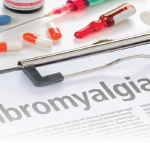Osteoporosis Update 2018: New Issues & Challenges
Felicia Cosman, MD, professor of medicine at Columbia University, New York, talked about the current challenges in treating osteoporosis. The first challenge, she said, is that healthcare providers are not focusing on the highest risk patients, adding, “Many patients who have fractures are not in the osteoporosis range with regard to BMD [bone mineral density].” Moreover, fewer than 25% of patients with new fractures are treated for osteoporosis.
The second challenge: When healthcare providers do treat osteoporosis, they tend to prescribe long-term, anti-resorptive treatments, such as bisphosphonates, which are associated with rare adverse events and have unproven anti-fracture efficacy. The problem is compounded by the fact that little evidence exists to help guide long-term treatment strategies and sequences. Moreover, whatever guidelines do exist are highly inconsistent across medical specialties. Above all, physicians tend not to recognize the role of anabolic therapy.
Dr. Cosman then focused her talk on fractures. She noted that fracture represents the highest risk factor for osteoporosis and is more important than BMD. Unfortunately, healthcare providers often overlook fractures, especially in the spine. Because most spinal fractures don’t come to clinical attention at the time of the event, proactive targeted spine imaging is the only way to identify these at-risk patients. “These fractures are important, and they are also quite common,” said Dr. Cosman.
The prevalence of spinal fractures increases with age. Thus, Dr. Cosman suggests vertebral fracture assessment for women over age 70 and men over age 80 if their BMD T score is -1.0 or less in the spine, total hip or femoral neck. If the BMD T score is -1.5 or less, then women 65–69 years old and men 70–79 years old should have a vertebral fracture assessment. Vertebral fracture assessment should also be performed on postmenopausal women and men age 50 and older with certain risk factors. These risk factors include low trauma fracture during adulthood, historical height loss of 1.5 inches or more, prospective height loss of 0.8 inches or more, and/or recent or ongoing long-term glucocorticoid treatment. If bone density testing is not available, then vertebral imaging may be considered based on age alone.
After a patient has had a first fracture, the risk of subsequent fracture is not linear over time. Instead, the patient is at very high, imminent risk. This risk translates into the need for a therapy that works quickly. Unfortunately, anti-resorptive agents require three years before they begin to reduce risk. In contrast, teriparatide works more quickly and has a greater degree of efficacy. Likewise, abaloparatide, a 34-amino acid osteoanabolic peptide that is a synthetic analog of parathyroid (PTH)-related peptide, interacts with the PTH1 receptor to stimulate bone formation with limited calcium mobilization and bone resorption. It has been shown in preclinical and clinical studies to improve BMD, bone microarchitecture and bone strength.
Dr. Cosman concluded by reiterating that most high-risk patients are not being identified and treated. Spine imaging can help identify these patients, and they should be treated with active anabolic therapies that can be followed by sequential monotherapy. This approach will minimize the duration of exposure to pharmacology while maximizing benefits to strength and BMD.


